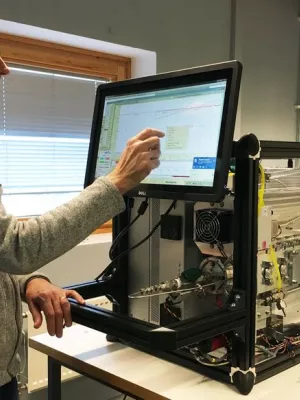
Erik Swietlicki
Professor

Variations in tropospheric submicron particle size distributions across the European continent 2008-2009
Author
Summary, in English
Cluster analysis of particle number size distributions from background sites across Europe is presented. This generated a total of nine clusters of particle size distributions which could be further combined into two main groups, namely: a south-to-north category (four clusters) and a west-to-east category (five clusters). The first group was identified as most frequently being detected inside and around northern Germany and neighbouring countries, showing clear evidence of local afternoon nucleation and growth events that could be linked to movement of air masses from south to north arriving ultimately at the Arctic contributing to Arctic haze. The second group of particle size spectra proved to have narrower size distributions and collectively showed a dependence of modal diameter upon the longitude of the site (west to east) at which they were most frequently detected. These clusters indicated regional nucleation (at the coastal sites) growing to larger modes further inland. The apparent growth rate of the modal diameter was around 0.6-0.9 nm h(-1). Four specific air mass back-trajectories were successively taken as case studies to examine in real time the evolution of aerosol size distributions across Europe. While aerosol growth processes can be observed as aerosol traverses Europe, the processes are often obscured by the addition of aerosol by emissions en route. This study revealed that some of the 24 stations exhibit more complex behaviour than others, especially when impacted by local sources or a variety of different air masses. Overall, the aerosol size distribution clustering analysis greatly simplifies the complex data set and allows a description of aerosol aging processes, which reflects the longer-term average development of particle number size distributions as air masses advect across Europe.
Department/s
- Ergonomics and Aerosol Technology
- Nuclear physics
- MERGE: ModElling the Regional and Global Earth system
Publishing year
2014
Language
English
Pages
4327-4348
Publication/Series
Atmospheric Chemistry and Physics
Volume
14
Issue
8
Document type
Journal article
Publisher
Copernicus GmbH
Topic
- Subatomic Physics
Status
Published
ISBN/ISSN/Other
- ISSN: 1680-7324